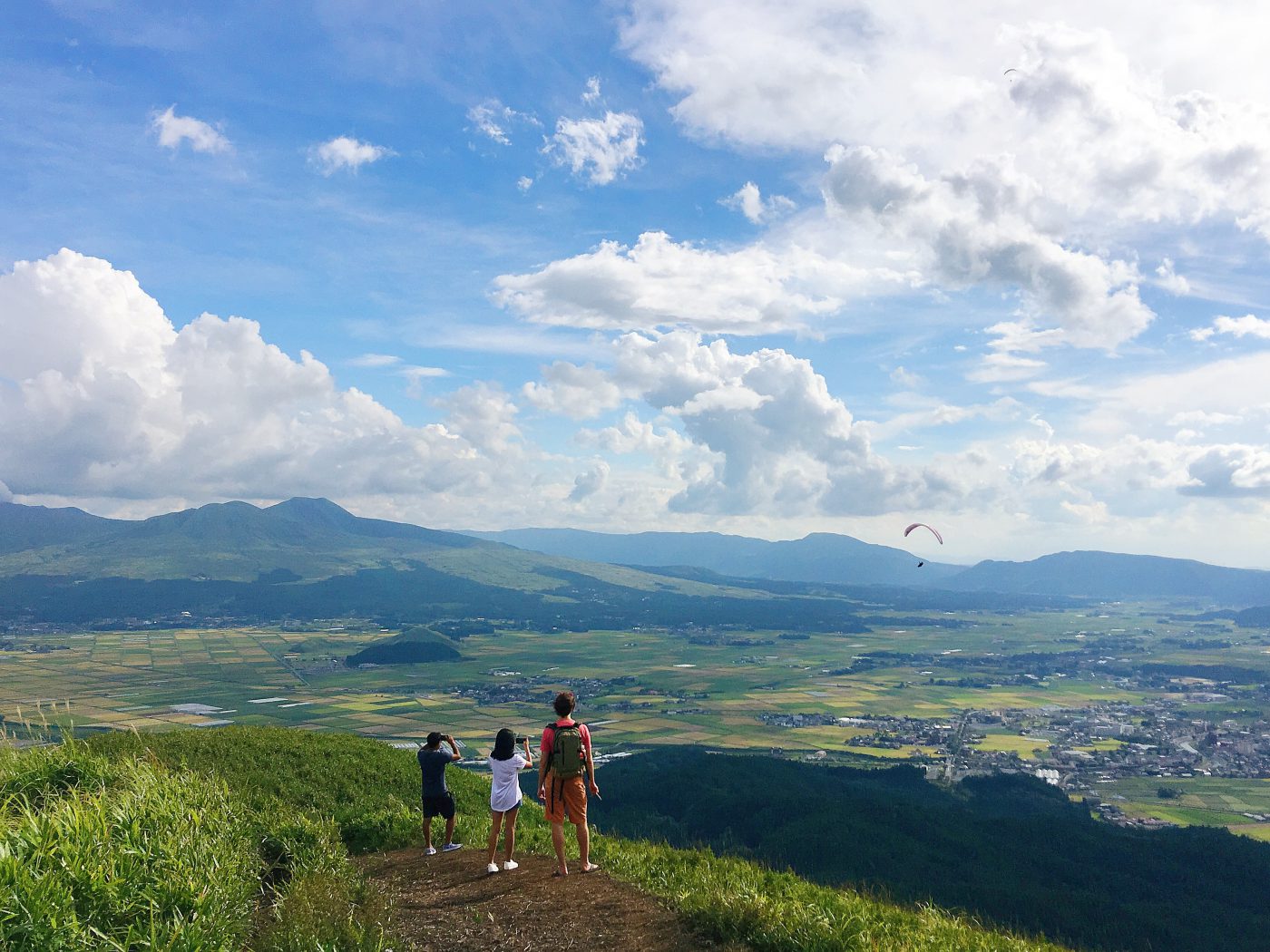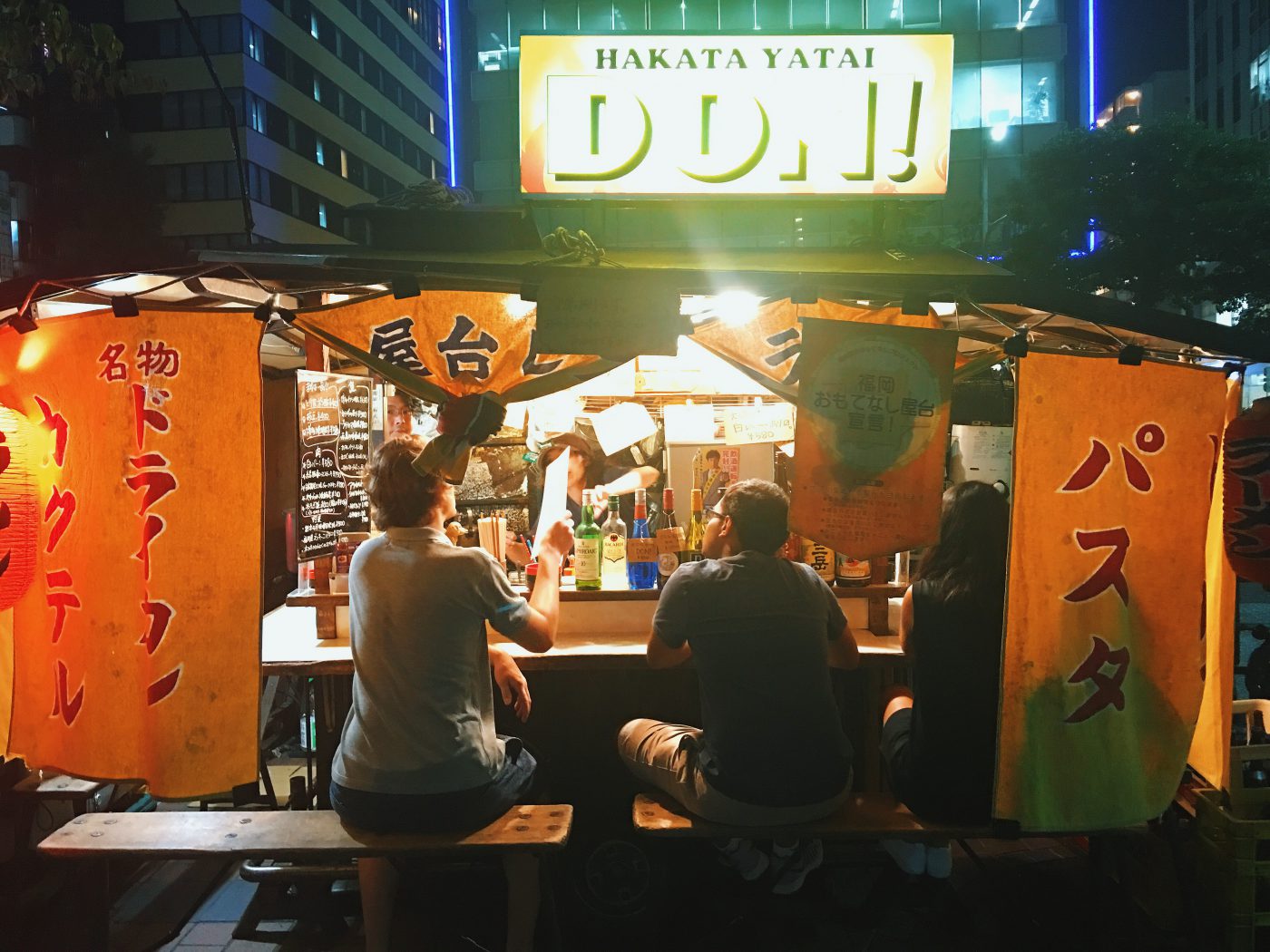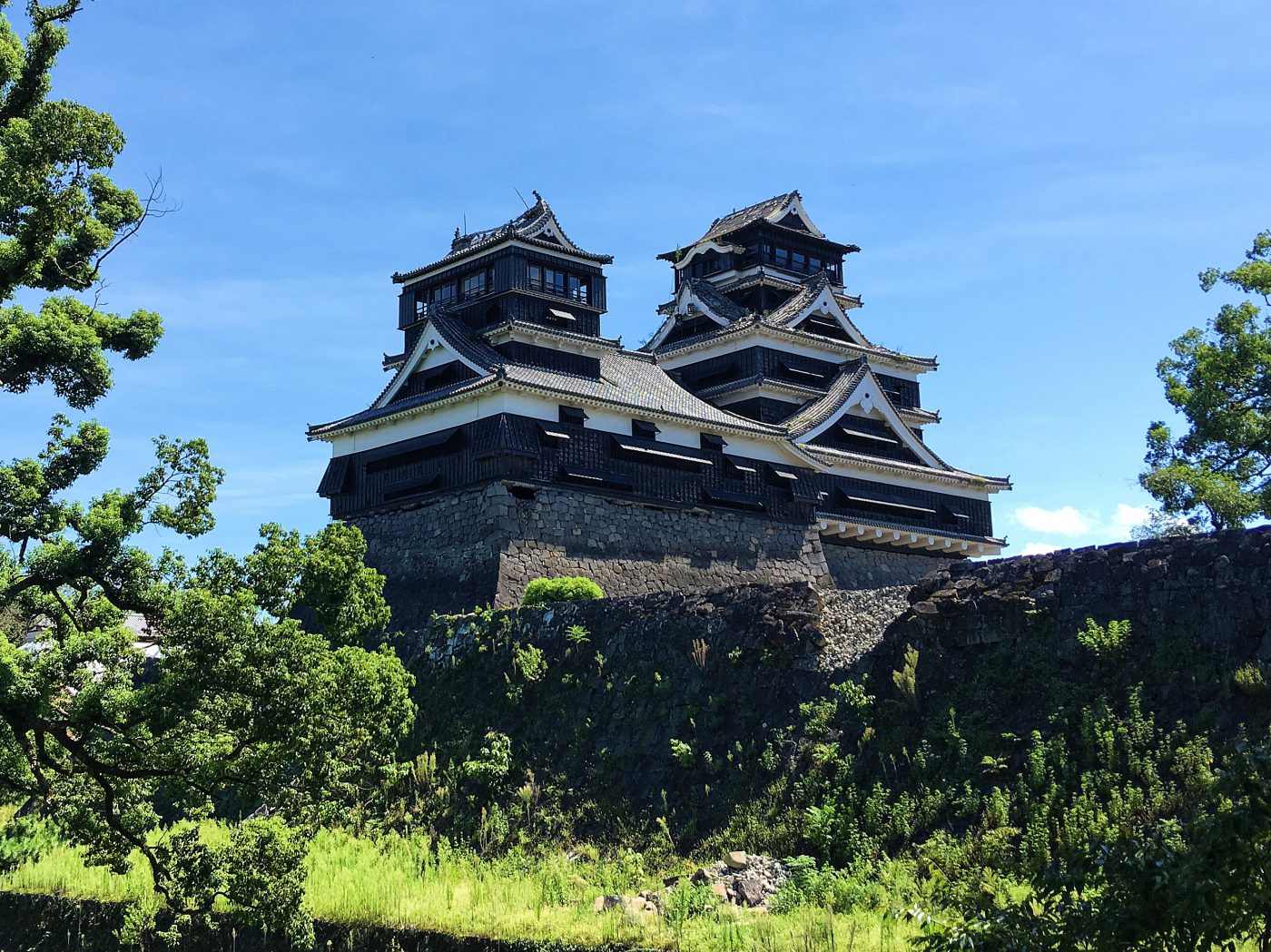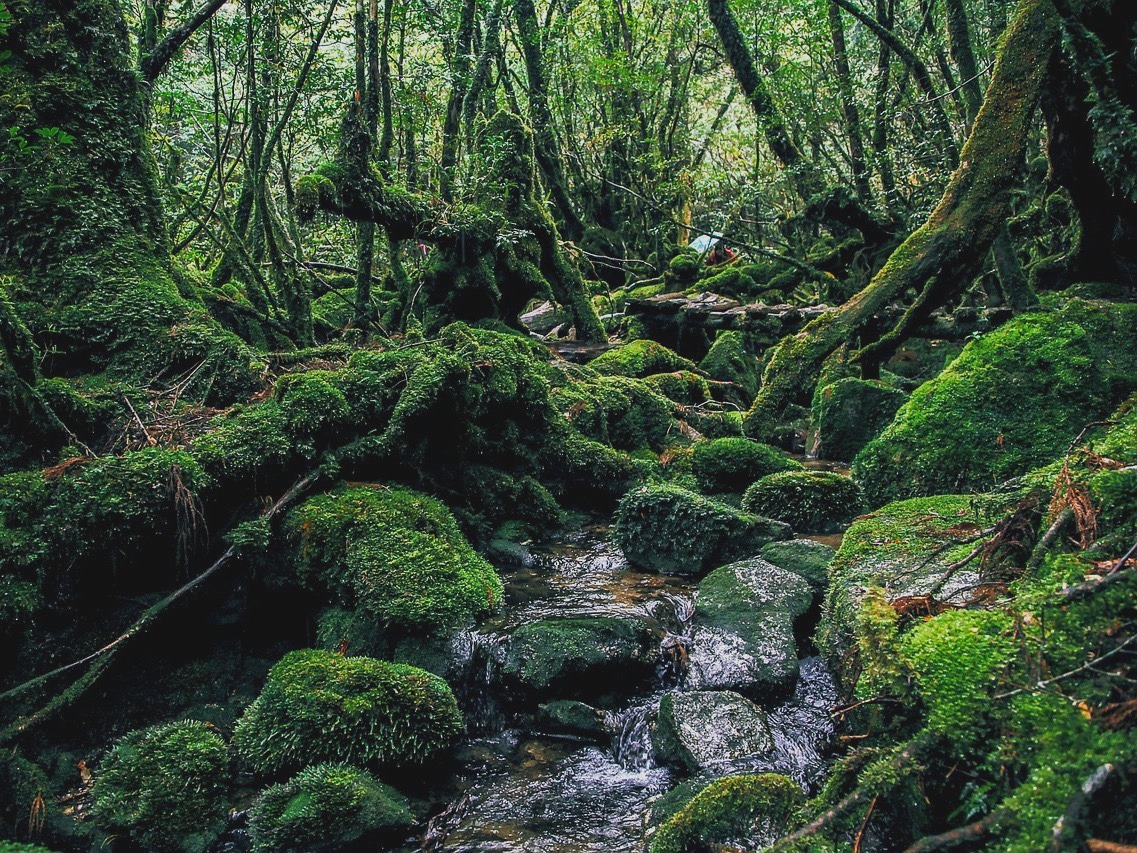The hardest yet most exciting part of traveling is often the planning stage and narrowing down where to go given the time you have. I visited the Kyushu region in Japan this past September. This is how I planned (and nearly failed to follow said ambitious plan) for the trip!

Tips for planning Kyushu Itinerary
1. Narrow down the city you want to visit – Kyushu is a huge region, and if you have limited time, you need to narrow down the experiences you want to see. No joke – whenever I am in a trip planning mode, I would open up google maps and see if there are any familiar names in the vicinity. I immediately zeroed in on the familiar cities: Hiroshima (not really in Kyushu but it’s very close), Fukuoka, Nagasaki, Kumamoto, and Kagoshima.
2. Plan out the order to visit the places you want to go to – Once again, I used google maps to see where each place are in relative to each other, then I checked the train routes to map out the best ways to travel between these cities and how long the journey would take. Once I’ve done this, it became clear that we needed to make Fukuoka our base since it’s the center point of the cities we’ve picked.
3. Look into getting a rail pass to save money – JR Pass is the train pass that allows you to take intercity trains in Japan for cheaper. The sights to see in Kyushu are spread apart in different cities, so unless you’re planning to only visit one city, you will definitely need the JR Pass as you’ll likely be using the train to move around. You can buy Unlimited JR Pass or JR Kyushu Pass. Scroll down to the end of this post for more information about the JR Pass and which one is more suitable for you.
🚆 Book train ticket online: Purchase Japan train ticket via Klook for easy redemption at the station once you’re in Japan.
4. Check the first and last train out of the city – I also checked for the first and last shinkansen out between cities so that I know the earliest time I can get to a city and the latest time I can leave. This helps me narrow that what activities I can do in the city.
5. Account for travel fatigue – I have to admit I got over-excited when I planned for this trip. I was really intent on hitting up all 5 cities in 7 days. My biggest advice here and a lesson I had to learn is to account for travel fatigue. You can’t feasibly be moving every other day and not get tired by the end of it. All of the cities I mentioned above are great destinations that I don’t want to miss – but it is very ambitious to hit up all five in 7 days. I had to sacrifice visiting Kagoshima since it isn’t convenient to get to if I want to also include Nagasaki in the itinerary.
My 7-Day Kyushu Travel Itinerary
In the end, after all the research, this is the Kyushu itinerary I went with:
- Day 1: Hiroshima. Land in Osaka in the morning, go to Hiroshima immediately, and spend all day in Hiroshima.
- Day 2: Fukuoka. Travel to Fukuoka in the morning, then spend time in Fukuoka All-Day
- Day 3: Nagasaki. Travel to Nagasaki in the morning and spend the rest of the day in Nagasaki
- Day 4: Stay in Nagasaki All-day
- Day 5: Nagasaki & Fukuoka. Spend time in Nagasaki in the morning, then go to Fukuoka in the afternoon.
- Day 6: Kumamoto Day trip
- Day 7: Spend time in Fukuoka in the morning, Fly back to Singapore in the afternoon
What to do and where to go in Kyushu, Japan
Here are some places you can consider visiting in Kyushu:
1. Fukuoka (2 days)
Fukuoka is the biggest city in Kyushu. It’s a great starting point for Kyushu – lots of direct trains leaving Hakata station, the main station of Fukuoka. Aside from that, they are also known for food! Yep, the Hakata ramen is actually from Fukuoka! You can read about the food in Fukuoka and Yatai stalls here.

2. Nagasaki (2-3 days)
Nagasaki needs no introduction, the city offers an extensive insight into Japan during the World War II period. Although they are mostly known for its bleak fate as the site of the second atomic bombing, Nagasaki holds an important place in Japanese history. During the era of seclusion called Sakoku, the Japanese were forbidden to leave the country, and the only foreign trade allowed within Japan was done through a manmade island in Nagasaki, called Dejima. Nowadays you can see history from the seclusion period as well as the era that follows after – the Dutch, Portuguese and Chinese influences from the 16-19th century when Nagasaki becomes the only open port in Japan.

3. Kumamoto (Day trip from Fukuoka)
In 2016, Kumamoto was hit by a series of very strong earthquakes. However, it’s still interesting to see the city after the earthquake. The Kumamoto castle, for one, was able to sustain the strong 7.0 earthquake, just as its Japanese architects had intended when the castle was built four centuries ago.
You can also do a road trip or tour to Mount Aso, one of the most beautiful areas in Kyushu. Kumamoto is a very doable day trip from Fukuoka. Read about my day trip to Kumamoto from Fukuoka here.

4. Kagoshima (1-2 days)
I did not make it to Kagoshima due to limited time in Kyushu, but I wish I had made it down here. Kagoshima is a seaside city in Kyushu and is best known for Sakurajima, a volcanic mountain often referred to as Japan’s Vesuvius. Aside from that, Kagoshima is also well known for its food and produce – most notably, the Kurobuta aka black pig, which is highly regarded in Japan for being high in protein and low in calories. Kurobuta is normally eaten in shabu-shabu style, aka Japanese hot pot.
If you have time and are interested in nature, you can also visit Yakushima, an island off the coast of Kagoshima. The island is covered in cedar forest that contains some of Japan’s oldest living trees – some as old as 7,000 years.

5. Beppu (1 day)
Beppu is a spa resort town, known for its range of onsens (Japanese hot springs) – they have over 2,000 onsens in Beppu! Aside from the usual hot springs, they also have sand baths, mud baths, and steam baths. You can relax in one of the Japanese’s favorite past times – a bath in the hot spring and eating Onsen food after. You can reach Beppu by train from Fukuoka, but if you’re a true Onsen enthusiast, you might want to check out this Beppu and Yufuin Onsen spa tour, which includes hotel pick-up and drop-off!
Booking Accommodations in Kyushu
Tips for booking hotels
- Book ahead of time – Sometimes I like to “wing it” and book accommodations last minute in the spirit of being spontaneous. I quickly learned this isn’t a very smart move when it comes to visiting Japan, as the good hotels get booked up really fast.
- If you are a non-smoker, pay attention while booking and make sure you tick a non-smoking room in the room type section. Smoking indoors is not illegal in Japan, so some hotels would segregate smoking and non-smoking rooms by floor. I had to stay in a smoking room in Nagasaki because I booked a smoking room by mistake and they had no more non-smoking rooms 🙁
- As we are traveling heavily by train, I find that staying at hotels that are on the main station itself (the station where the shinkansen line stops) really helped us during traveling days since we don’t need to worry about the logistics of getting to the train station. As a bonus point, these areas also tend to be very convenient since in Japan the main station would also come attached with all the amenities like convenience stores, major stores for shopping, and restaurants.
Kyushu Hotel Recommendations
Here are the hotels we stayed in each city. Each of these is very close or attached to the main station of the city, so they are located in a really good location.
Hiroshima
- Hotel Granvia Hiroshima is literally on top of the Hiroshima station. Despite this, it was not noisy since the hotel rooms are located high up and they are good with noise insulation.
Nagasaki
- JR Kyushu Hotel Nagasaki – yes, JR as in Japan Rail. Nagasaki station is quite small and the lobby of this hotel is right outside the exit of the station!
Fukuoka
- Nishitetsu Hotel Croom Hakata, next to the Hakata Central station in Fukuoka – about 5 minutes walk. I ended up staying here because my first choice was booked up.
- JR Kyushu Hotel Blossom Hakata Central – This was my first choice for Fukuoka, but it was booked up during my visit! It would have been really convenient because Hakata is a major station with all the convenience stores, shopping, and restaurants.
Using JR Pass in Japan
I have been to Japan many times before, but I’ve never used the JR pass. Getting a JR Pass only makes sense if you are moving around from city to city, it didn’t make economic sense to get the pass. But when visiting Kyushu, there is a big chance you need the JR Pass since the attractions in the Kyushu region span many cities.
JR Pass and Shinkansen: I’ve written all about JR Pass and taking Shinkansen in Japan in this guide here.
That’s all! It might seem complicated, but after doing this a few times it’s pretty easy 🙂
Are you planning a trip to Japan? I’ve written loads about the beautiful country. Check out the ‘Japan’ category of this blog for some travel inspiration.

Hi! This is so helpful. We were planning to go to Fukuoka and Kagoshima around July 9. Do you think rain will be a problem and we should change our plans to go somewhere else in Japan?
Hey Gina, July does have higher chance of rain but I can’t tell you if it’s a good time to go or not. I feel like other parts of Japan would face the same issue. I did hear Hokkaido is good to visit in the summer since the temperature is ideal.
Hi Melissa
Thank you for sharing your detailed Kyushu itineraryI I will be going to Kyushu this year in early Nov .for a 9 -days trip , the places I hope to visit are Hiroshima, Nagasaki , Beppu , Kumamoto , Kagoshima . Will 9 days be too much to pack in ? I notice you landed in Osaka and head out to Hiroshima on the same day . . I am intend to skip Osaka and fly into Fukouka . Can I go to Hiroshima to Fukuoka by Shinkansen . . Do I need the JR unlimited pass or the Kyushu 7 days JR Pass is sufficient .
Hey Theresa, definitely the Kyushu pass should be sufficient for you as you’re only staying mostly in Kyushu. It is possible to go to Hiroshima from Hakata station via shinkansen, but this would not be covered by the Kyushu JR since Hiroshima is not part of Kyushu. So if you intend to visit Hiroshima, I recommend activating the JR Pass after you’ve done so.
Hi and thanks for this article, it’s very informative. Just wondering, if you follow your day 1 arrival in Osaka then back to Singapore on day 7 from Fukuoka? Then what rail pass you need to use from Osaka-Hiroshima and Hiroshima-Fukuoka? Thanks again
THANK YOU!! I am SO glad I read this, especially about the shinkansen, how to work out the unreserved cars and also where to line up. There is just so much to know, I’d be lost if I hadn’t read it. Plan to go in May with my son. I can speak Japanese but am still overwhelmed by all this. Hope I get it right!!
I’m glad it helped you, Helen! Just note that if you travel with JR Pass you can reserve seats at the train station, so you won’t need to go on the unreserved car.
Hello! This is actually quite informative. I’ve been to Fukuoka too, but I think I’ve missed out a lot of places once I’ve read your blog. Haha!
Hello Melissa,
what a wonderful blog!! I really like the way you present Japan in such a natural way.
If you ever come back to Kyushu, let me show you around my hometown, Kobayashi. Kobayashi is in Miyazaki, so most travellers with limited time don’t put it on their list. But it is more than worth a visit! The Kirishima mountains are great for hiking and the lack of tourists makes for a very authentic Japanese experience. I’d be happy to help you with planning your trip or take you to the mountains or the other fabulous sights in the area.
Hi Janette
My name is Lynn and I came across your comment as I’m looking into Kyushu blog. Do you still live in Kobayashi?
I’d love to get your advice as I’m planning for our trip to Kyushu in July 2025. Could you please email me your contact at [email protected]? Thanks
Looking forward to hear from you
Hi Melissa,
Did you buy subway pass for travel in Fukuoka? Was it useful or convenient to visit tourist sites around Fukuoka? Please advise.
Hey Soo, I didn’t buy travel pass in Fukuoka since we were mostly using it as a base for nearby attractions.
Hi, good article but I do believe if you’re from Osaka and only going up (down to) Kumamoto in 7 days, you should consider the Sanyo san’n pass instead. 7 Day JR Sanyo-San’in-Northern Kyushu Area Pass Obtain your Exchange Order in prior by delivery / pick up, activate your 7 consecutive days rail pass that covers unlimited rides from Osaka/Kyoto to Northern Kyushu at a great price https://www.klook.com/activity/5769
It is not only save you a bit of money but also allows you to take faster Sanyo shinkansen which is not allowed only using ordinary JR Pass.
Hi Melissa,
Have you been to Oita and Yufuin before? are both of these places near to beppu?
Hey Ellisha, I haven’t been to those places unfortunately, but they are very close to Beppu.
can i just buy the train tickets without having a JR pass? do they sell it over the counter?
yes they sell tickets over the counter at the station at regular price
Hi, if I am scheduling to hang around in Fukuoka area for 5 days only. Which pass are you recommending to me? JR Kyushu Pass or JR Pass? Tq
depends on your travel plan, but if you are only going to be in Kyushu then JR Kyushu will be sufficient.
Hi! How much did you spend for the entire tour?
Can i rearrange the line up? Example will start in Kagoshima on Day 1 and so on?
Hey Kaye, This was so long ago that I unfortunately don’t remember the budget. I think we spent less than $1500 per person though including flight from Singapore which was about $700. You can definitely rearrange the line up, as long as you are ok for long travel on Day 1. Kagoshima is located the furthest down from Fukuoka.
hi thanks 4 sharing. hope you’ll explain more abt fukuoka n nagasaki soon becoz i’ll be there on april. and i need extra info for my iti. tq
Thank you for the article. Very clearly written
Just wondering why you didn’t get the JR Kyushu pass instead?
i think its because i needed it to be valid for 7 days
Nice article! Wish to have JR pass experience.
Thank you Melissa.
Yes! They are very exact and punctual too!
last photo its so curious and funny.
Train really stop in the place??